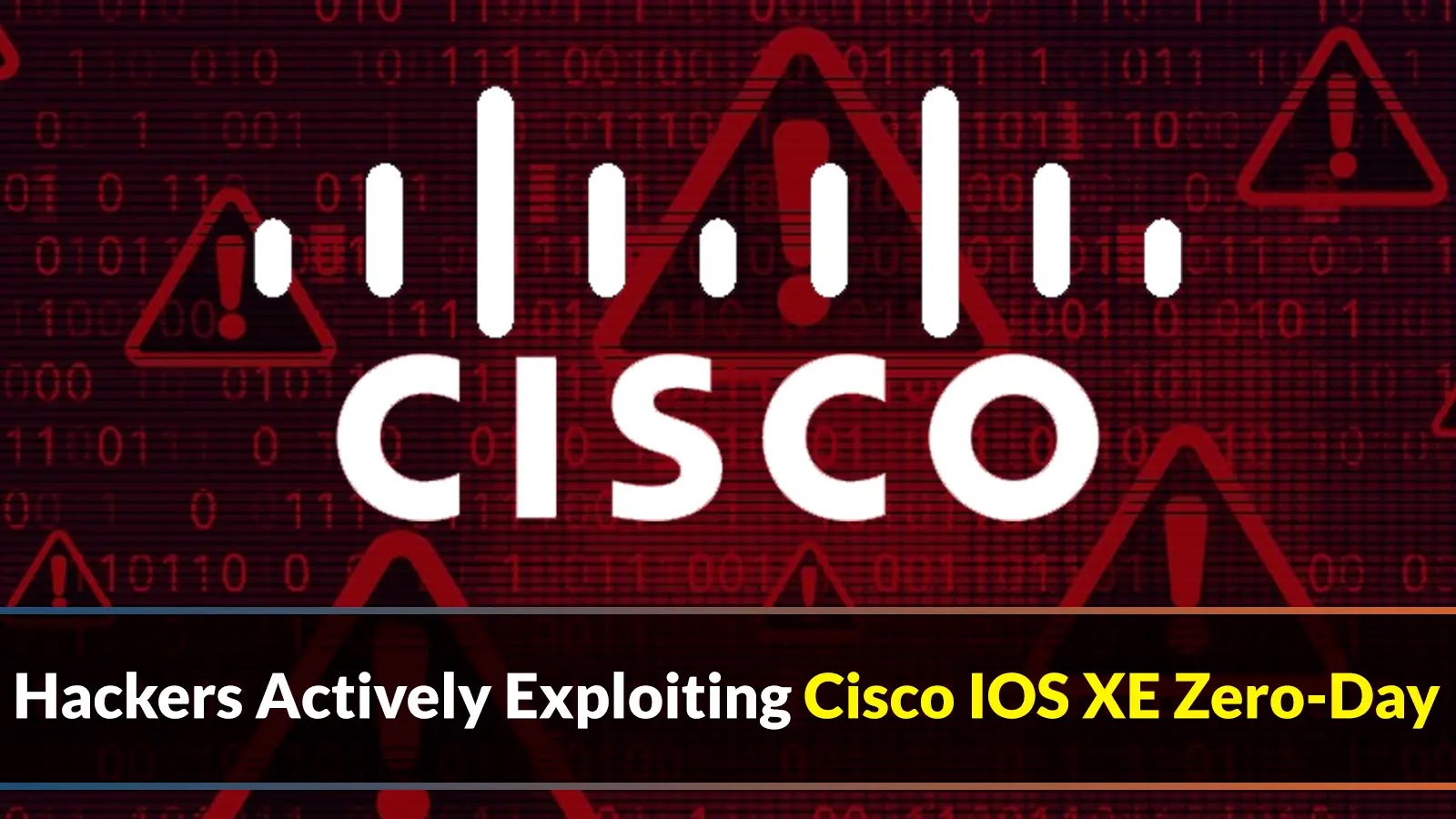Threat Actors Actively Exploiting Cisco IOS XE Zero-day Vulnerability

Threat actors exploit zero-day vulnerabilities on fable of these flaws are unknown to the intention developers, making them highly effective for launching attacks.
Exploiting zero-days enables malicious actors to avoid security measures and kill unauthorized entry or maintain watch over over systems, maximizing their potentialities of success.

A weird Zero-day vulnerability (CVE-2023-20198) in Cisco IOS XE’s Web UI feature that affects devices with exposed HTTP/HTTPS Server performance when associated to the net or untrusted networks has been found by Cisco.
The on-line user interface (UI) is a graphical user interface (GUI) basically based mostly system administration application that simplifies system administration without the need for any extra installation or licensing. On the different hand, it’s miles strongly suggested in opposition to exposing the salvage UI to the net or unreliable networks due to in all probability security dangers.
Cisco IOS XE Zero-day Vulnerability
Cisco detected suspicious bellow on a buyer intention starting September 18 and confirmed associated habits by September 28.
This enthusiastic making a ‘cisco_tac_admin’ fable from an irregular IP address (5.149.249[.]74). The bellow ceased on October 1, with out a extra associated habits noticed.
Why API Security Must be Your High Precedence
API security isn’t upright a priority; it’s the lifeline of companies and organizations. But, this interconnectivity brings with it an array of vulnerabilities that are infrequently concealed under the skin.
Cisco Talos Incident Response (Talos IR) and TAC acknowledged a associated cluster of bellow on October 12. An unauthorized user created a ‘cisco_support’ fable from IP address 154.53.56[.]231.
This bellow included deploying an implant (‘cisco_service.conf’) to build a brand unusual net server endpoint for expose execution on the system or IOS level. The implant is now not continual however creates administrator-level user accounts.
CVE-2023-20198 has a extreme CVSS rating of 10, enabling paunchy admin entry and granting an attacker maintain watch over over the router for in all probability unauthorized activities.
The use of an unknown system, the actor exploited CVE-2021-1435 to set up the implant, even on totally patched devices. The implant, coded in Lua with 29 traces, enables arbitrary expose execution.
Flaw Profile
- CVE ID: CVE-2023-20198
- Advisory ID: cisco-sa-iosxe-webui-privesc-j22SaA4z
- Description: Cisco IOS XE Instrument Web UI Privilege Escalation Vulnerability
- First Printed: 2023 October 16 15:00 GMT
- Cisco Malicious program IDs: CSCwh87343
- CVSS Get: Disagreeable 10.0
- Severity: Serious
Advice
Organizations doubtlessly affected will possess to practice Cisco’s PSIRT guidance. Take a look at for irregular users and scramble the following specified expose (change ‘DEVICEIP’ with the intention’s IP) to detect the implant:-
- curl -ok -X POST “https[:]//DEVICEIP/webui/logoutconfirm.html?logon_hash=1”
This expose assessments for the implant’s presence in the Web UI. If it returns a hexadecimal string, the implant is recent.
Narrate that this handiest works if the salvage server is restarted. Snicker coverage is straight away available for CVE-2021-1435 and interactions with the implant.
IOCs
- 5.149.249[.]74
- 154.53.56[.]231
Usernames:-
- cisco_tac_admin
- cisco_support
Source credit : cybersecuritynews.com

